It’s a fine May morning, and until a couple of minutes ago, the search for ornate box turtles here at the Conservancy’s Nachusa Grasslands Preserve in Central Illinois was going extremely well. We are up to 16 turtles on the morning so far.
Unfortunately, progress has come to a halt because the field assistants found the remains of something that might once have been a bison. And now they’re rolling in it. With glee.
“Well,” says John Rucker, as he surveys his mucky, happy charges. “Getting that smell out of their coats is going to be a project.”
Rucker gives a few quick commands and his field assistants – four female Boykin spaniels – finish their impromptu break, and get back to the job at hand: namely, tracking and retrieving every ornate box turtle they can find in these restored and remnant native prairies.
Yes, retrieving. I expected the tracking. The retrieving part came as a bit of a shock.
“The dogs find more ornates in two or three hours than we’d probably find in a whole week or even longer,” says Matt Allender, the team leader for the University of Illinois scientists at Nachusa this week, many of whom are grad students, doctoral candidates and post docs working on projects related to reptile health. “We couldn’t do this project without John and the turtle dogs. They’re part of the team.”
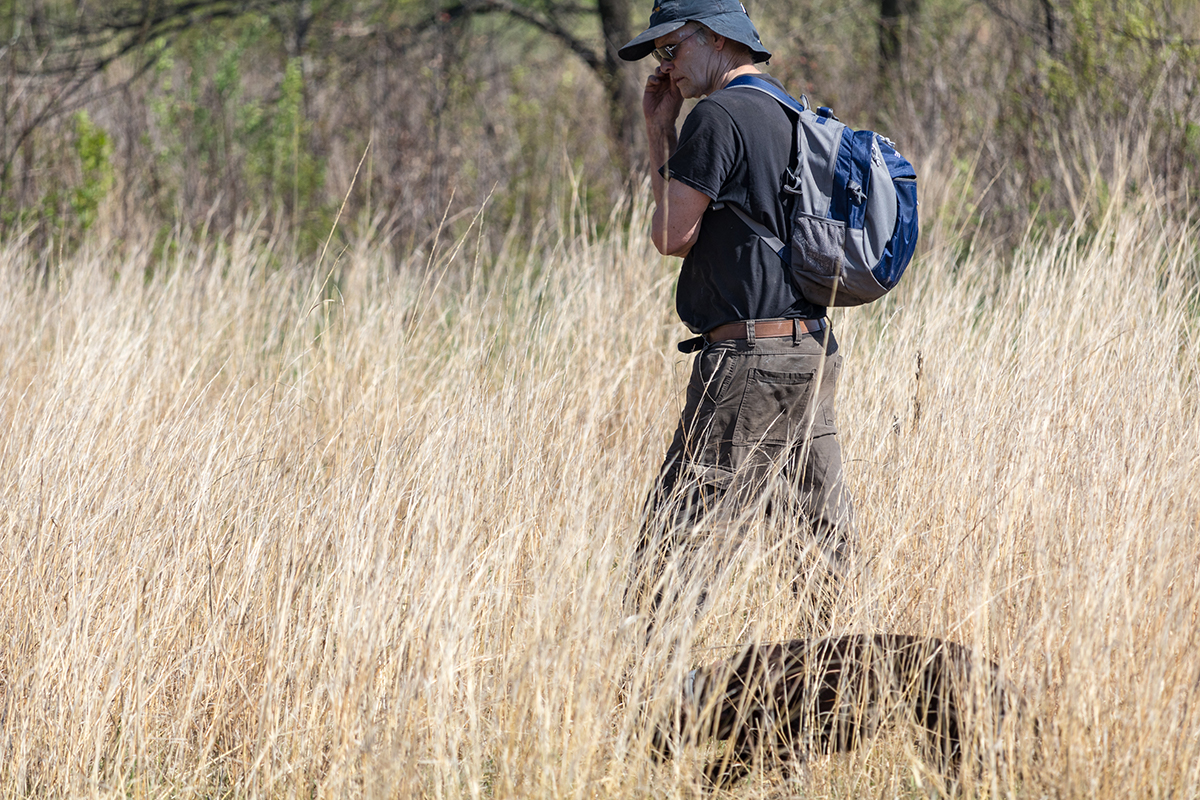
These medium-sized spaniels with their amber eyes and thick, brown coats that shine like copper in the sunshine were originally bred in South Carolina for bird hunting. But the breed also produces, as Rucker discovered by accident some years ago, a few special individuals who turn out to make excellent, well, turtle retrievers.
“They have very soft mouths,” Rucker explains as Jenny Wren (who has been finding the majority of turtles this morning) lopes up with the latest ornate find, which will be turtle number 19 by my count.
Jenny sits obediently at John’s feet, holding up her prize – like it’s some kind of reptilian tennis ball — and I can see that her tongue is between her bottom teeth and the turtle’s plastron (the bottom of its shell). She’s holding the ornate so lightly, I don’t feel any resistance when I slip it from her mouth. And the turtle shell is not even slobbery like a tennis ball would be.
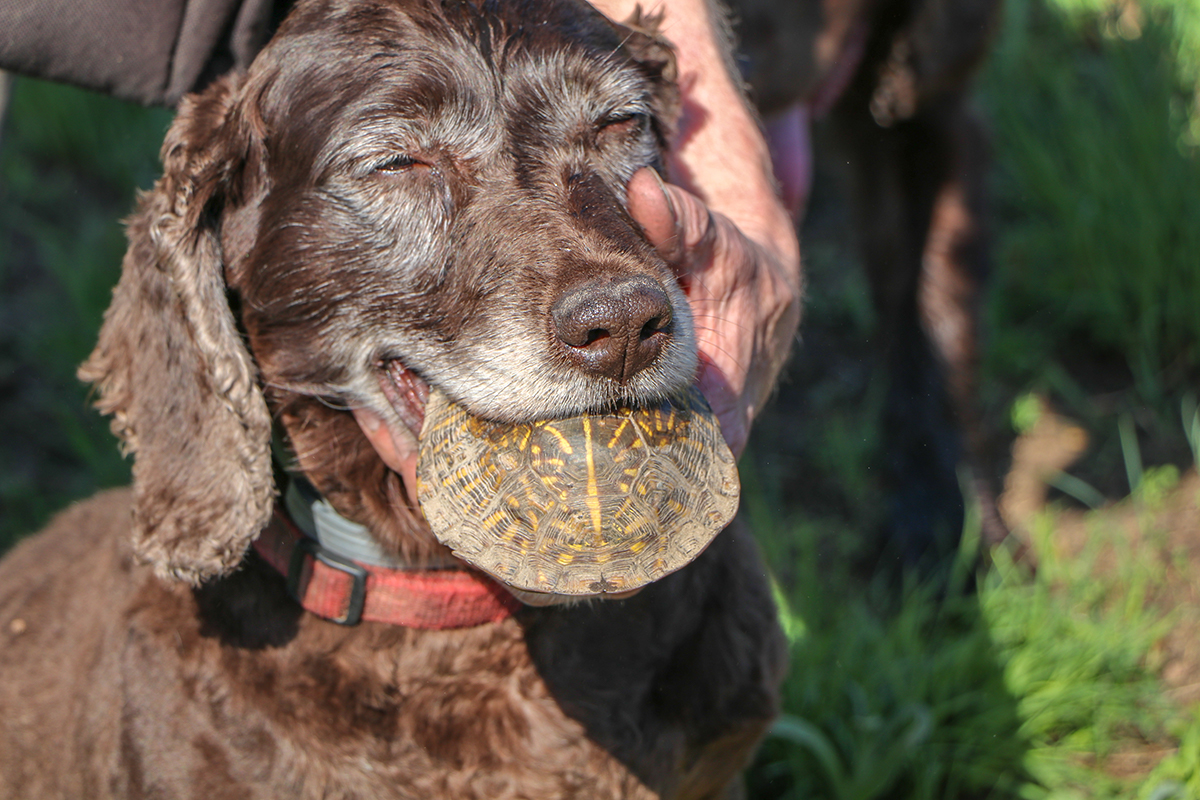
“I have the turtle,” I say to one of the nearby scientists who is busy logging the exact GPS coordinates where Jenny Wren first found the turtle. It’s important to record the location precisely so the scientists, once they finish their tests, can return the turtles (by human hand this time) to the exact same place they were originally found.
“See?” Rucker says as he bends down to pet and praise Jenny. “The dogs are very gentle and they carry the turtles without injuring them. Ornates, blandings, Eastern box turtles, wood turtles, they can track and retrieve them all.”
Ornate box turtles, which tend to grow to around five to seven inches in length, are known for their beautiful backs (the carapace). To me, their shells look like a night sky full of yellow starbursts. They are true box turtles – one of the few turtles capable of completely sealing themselves inside their shells for protection from predators.
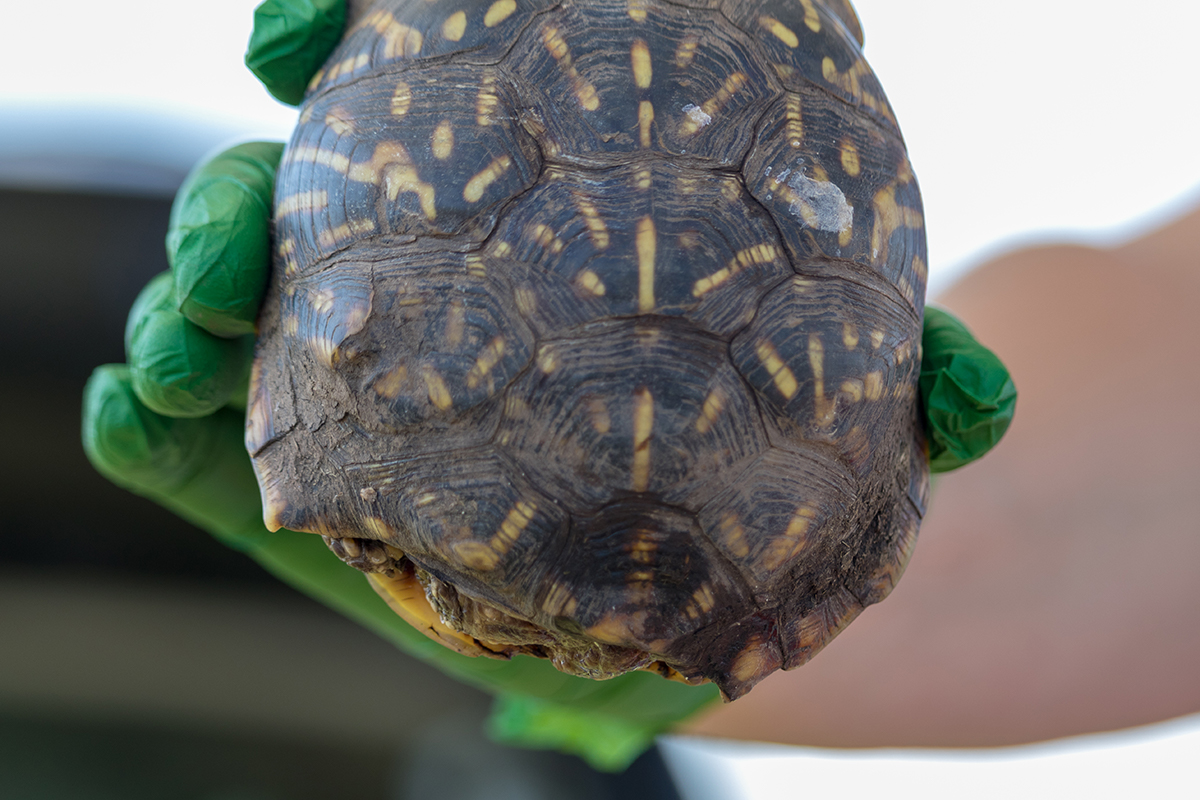
Which helps protect the adult turtles from, say, raccoons and badgers, but does little to thwart farm machinery and cars. The conversion of native Illinois prairie to farmland and pasture is one of the main reasons ornates are listed as a threatened species in Illinois.
Nachusa Grasslands has several populations of ornates, but Bill Kleiman, the preserve manager, would like to know more about how healthy and viable they are. Are there enough turtles of different ages to sustain ornates on the preserve into the foreseeable future? Are they healthy? Diseased? Injured? He needs to know more to inform the way the preserve is managed.
The bottom line, he says, is that “we want a lot more turtles here, and to make that possible, we need to understand many different aspects of our current population.”
It’s that need for more data – more evidence to inform the science behind the Preserve’s ongoing restoration and management — that brings Allender and his crew, and John Rucker and his spaniels to Nachusa this week. The scientists have set up a temporary field station under a tan canvas tent where they’ll be assessing all the turtles they collect.
Honestly, the set up – with its colorful canvas camp chairs and folding tables covered with scientific instruments — looks like a cross between a high-tech lab and a tailgate party. And as I watch the scientists go to work on the specimens they’ve collected this morning (22 by my last count), I keep thinking it’s a little like all those stories people tell about alien abductions. Only with turtles.
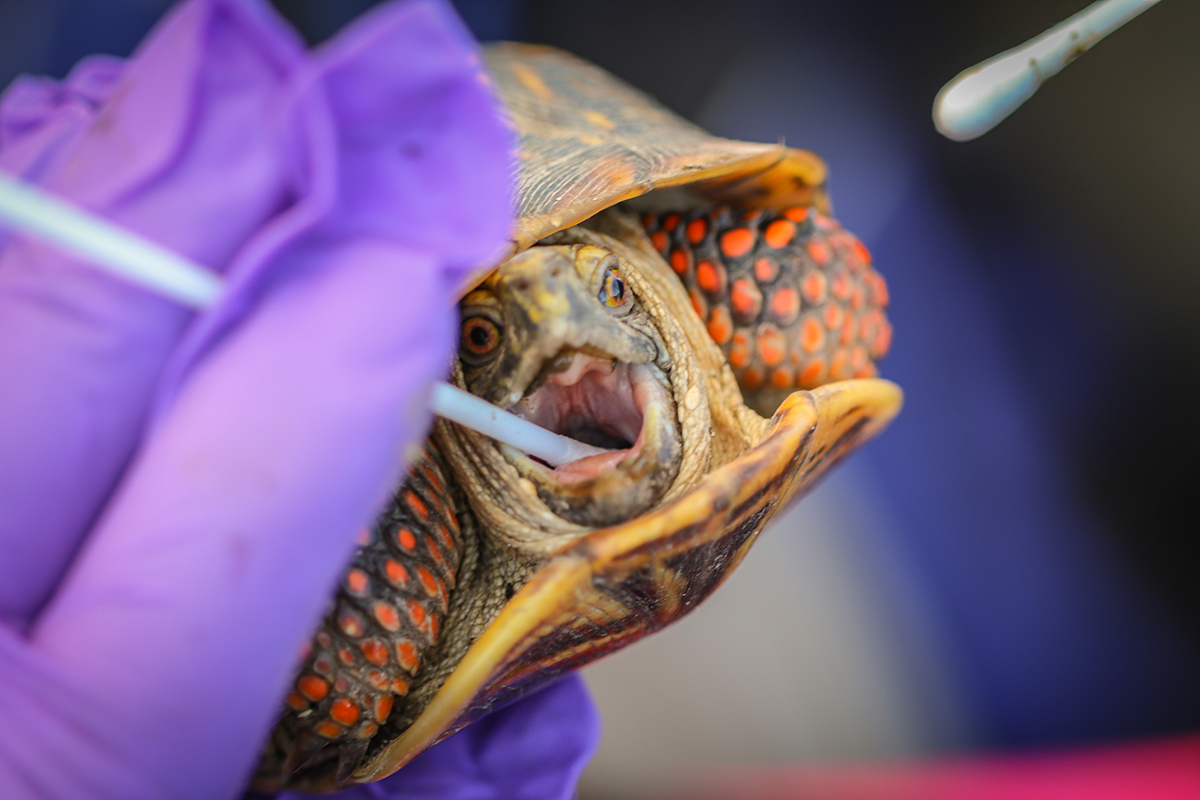
There are tackle boxes full of test tubes and slides, selections of syringes for drawing turtle blood, pipettes, cotton-tipped swabs, laser thermometers, electronic scales for gathering weight data, and even a portable doppler monitor. Most commonly used to monitor human fetal heart rates, the monitor also works great for monitoring ornate turtle heart rates. The scientists are looking in turtle eyes and down turtle throats, listening to their hearts, taking their temperatures and just generally giving each ornate a thorough – and thoroughly recorded – check up.
Over the coming days, weeks and months, they’ll be analyzing the blood they’ve taken and sequencing the DNA they’ve collected to learn more about the health and genetic makeup of the ornate populations here at Nachusa.
The thing is, all of this technology – all of the gear and potential – is useless without turtles to use it on. After all, notes Allender, “it’s hard to assess the health of turtles when you can’t actually find any.”
And to find them, the scientists need John Rucker and his turtle dogs.
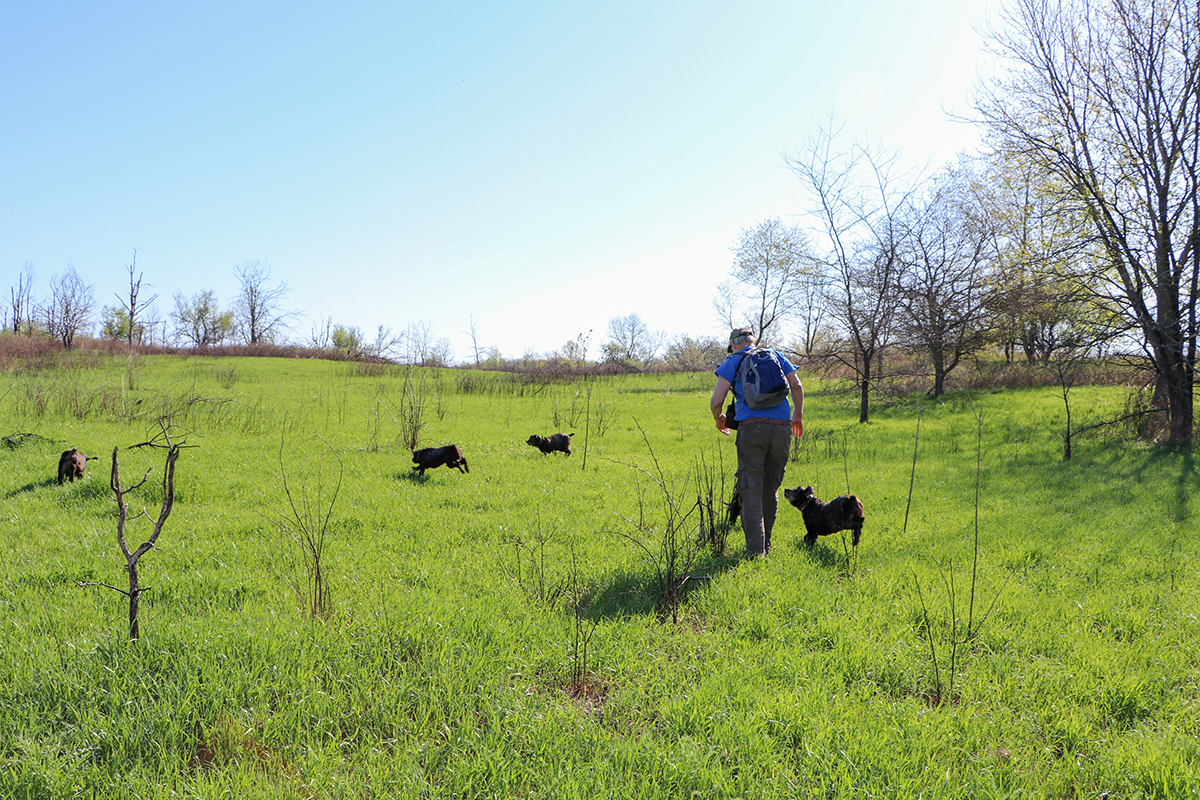
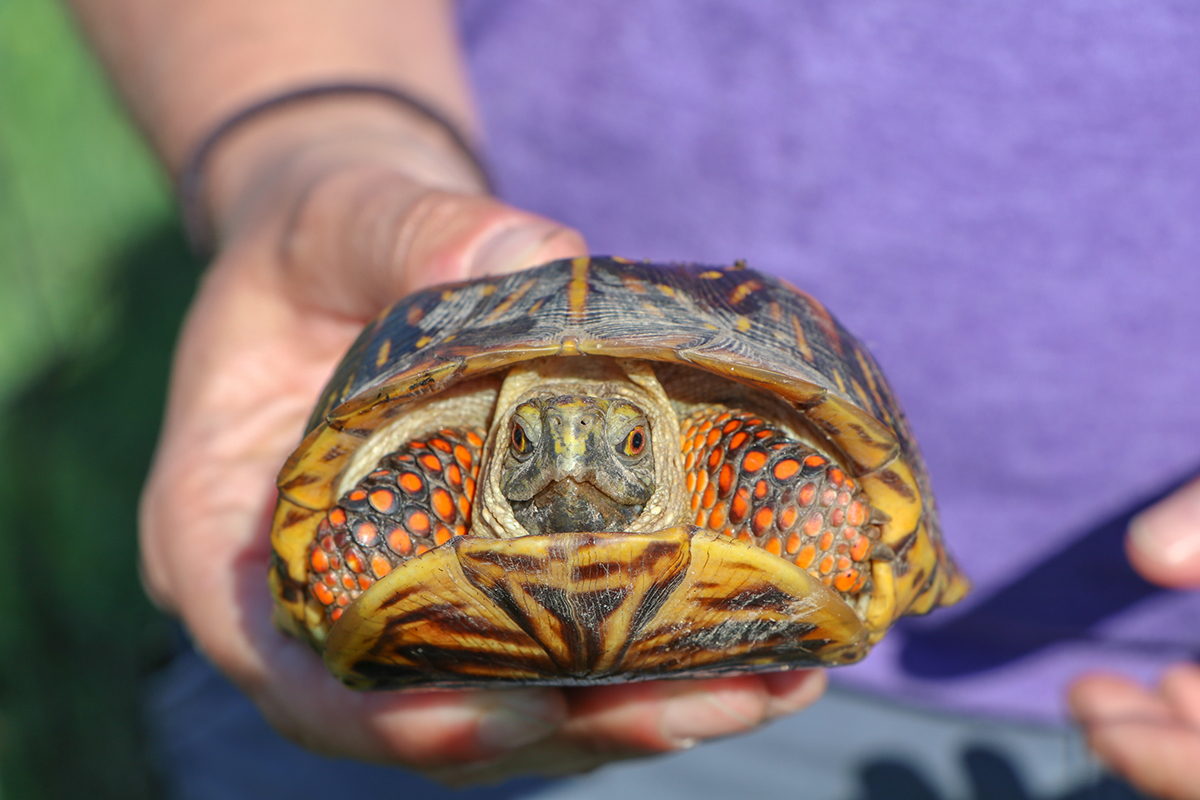
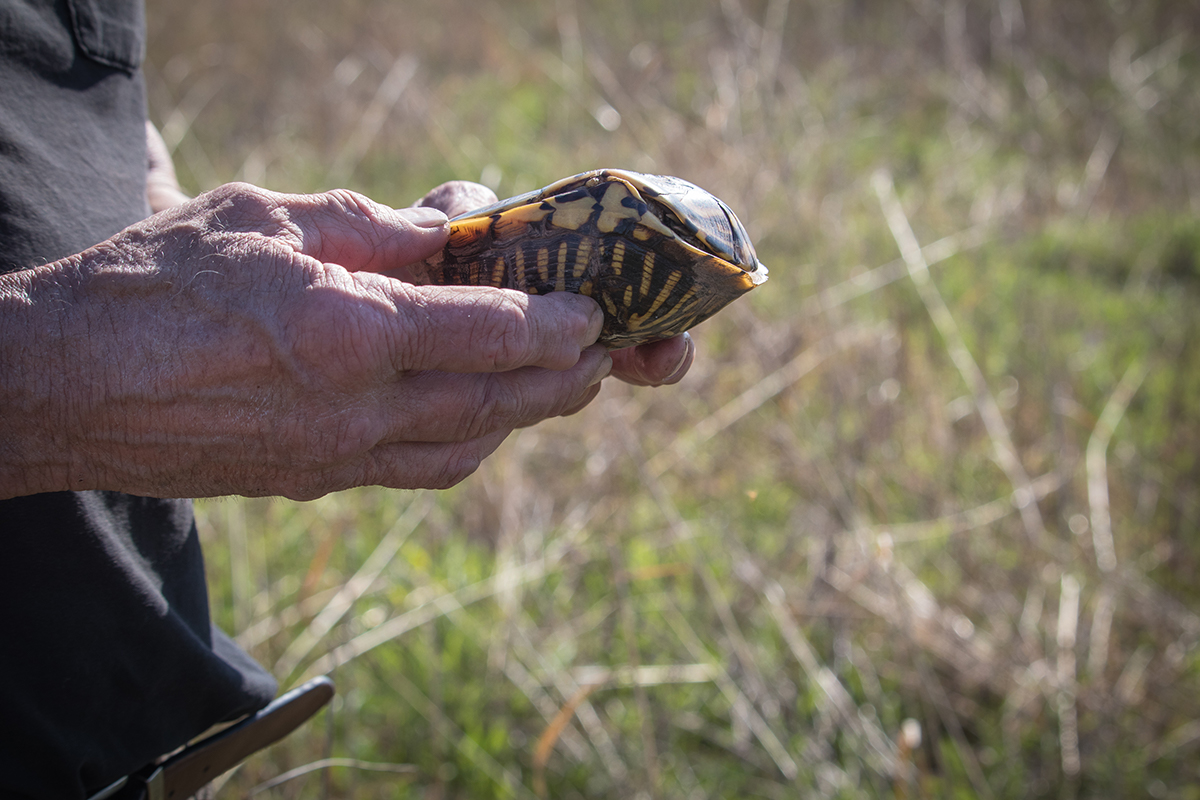
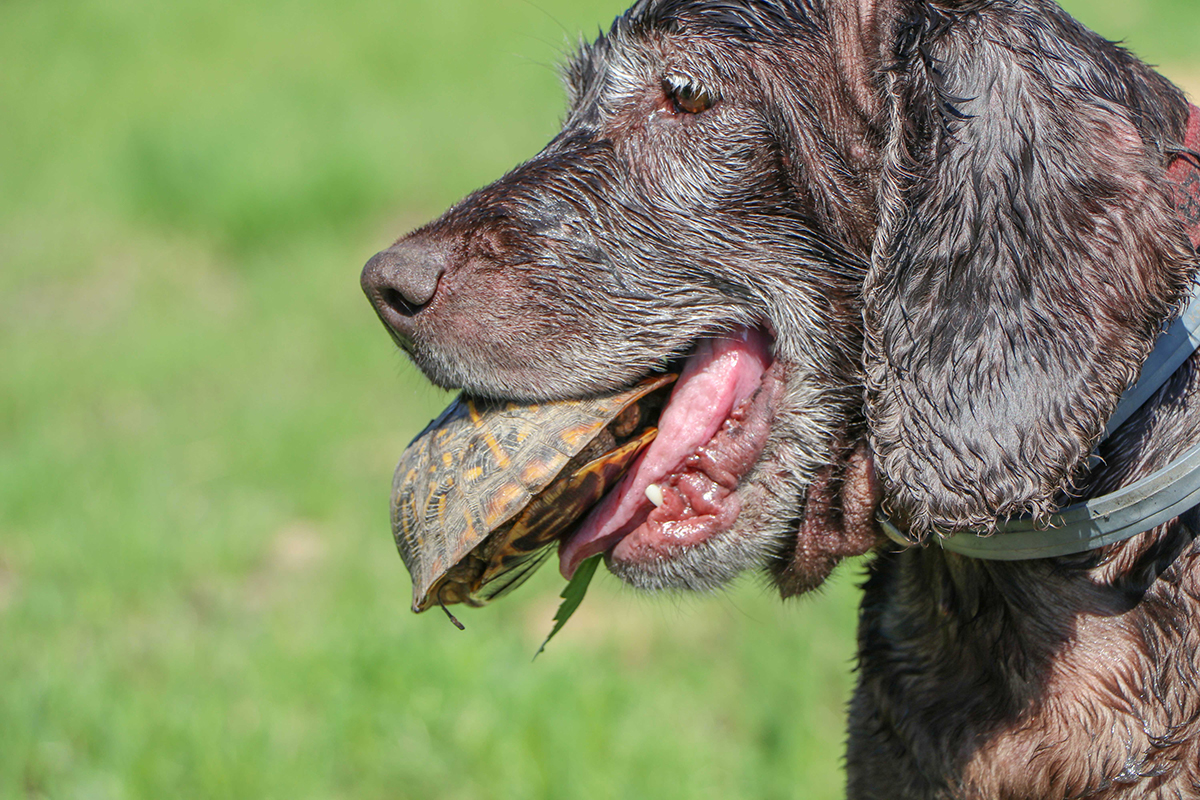
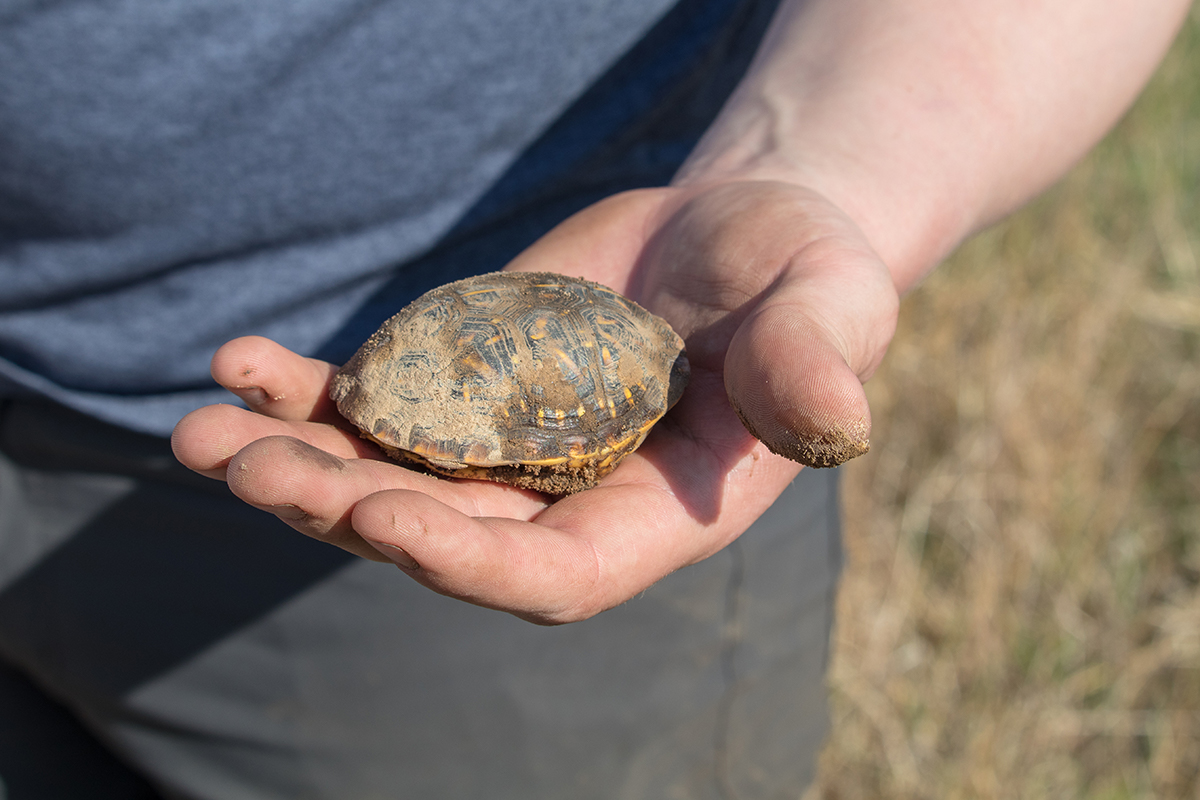
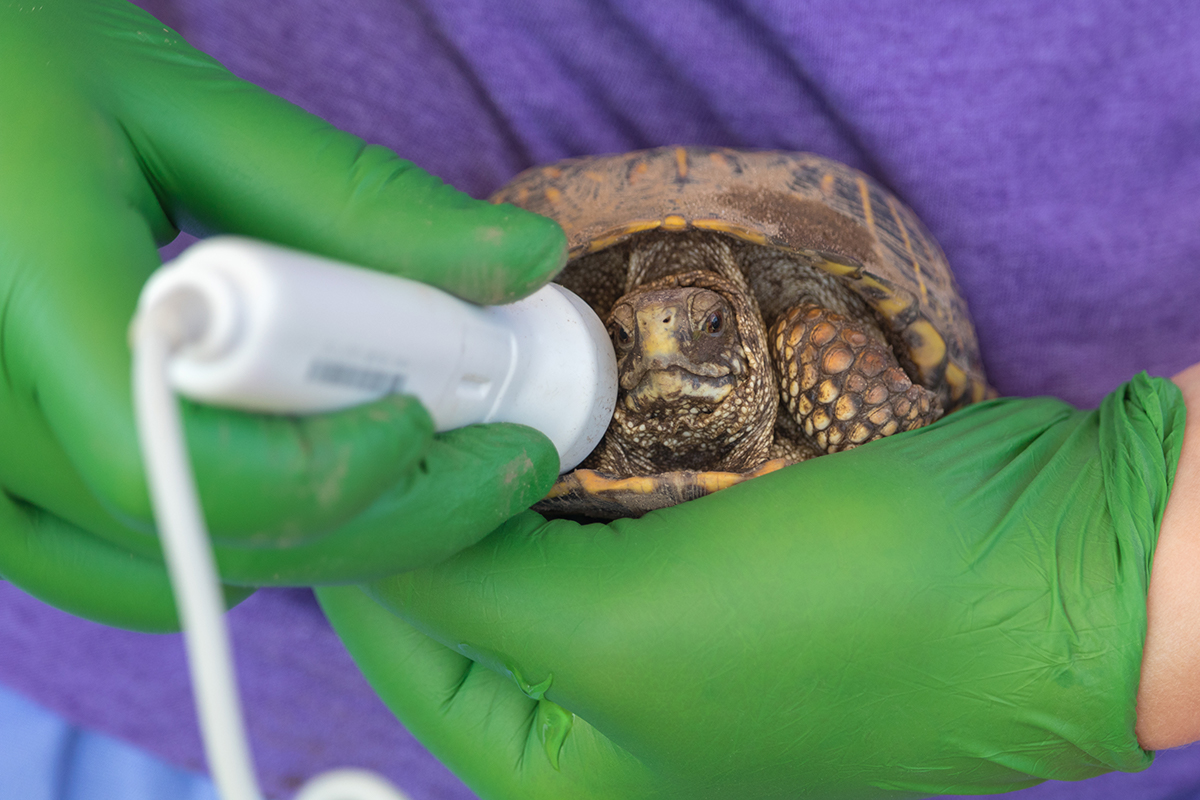
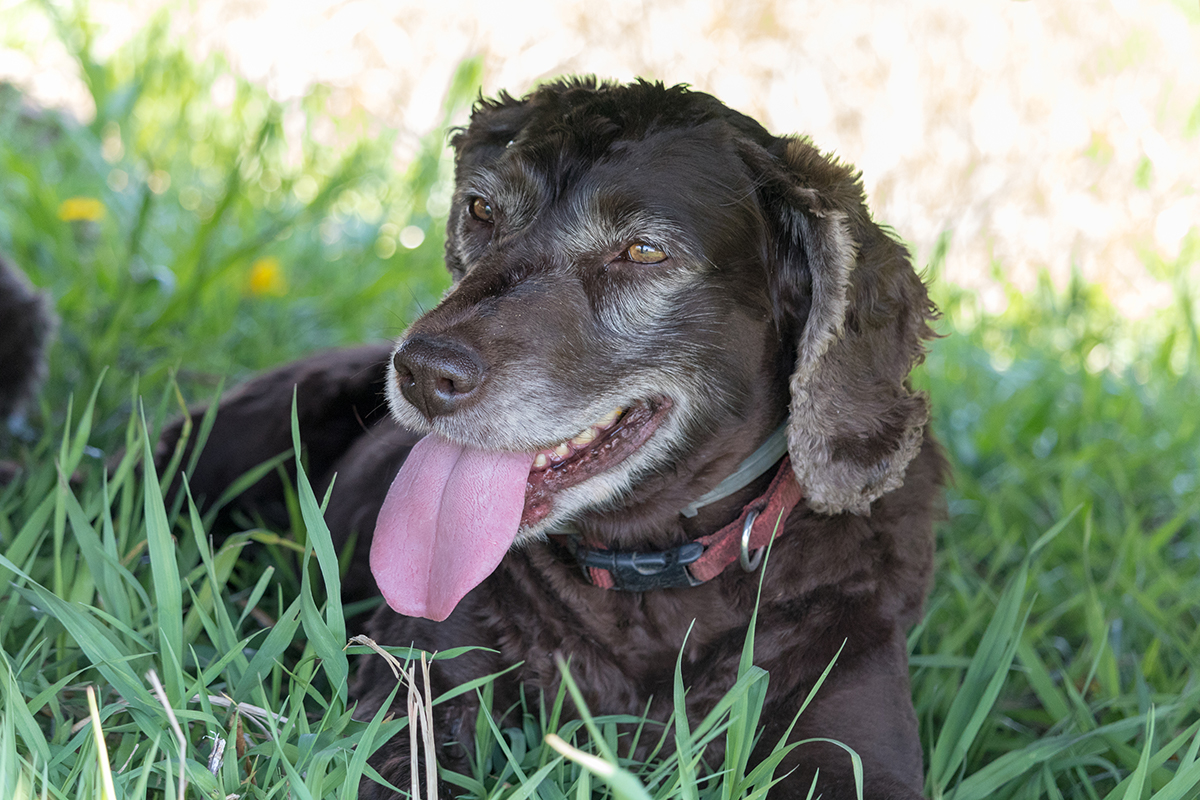
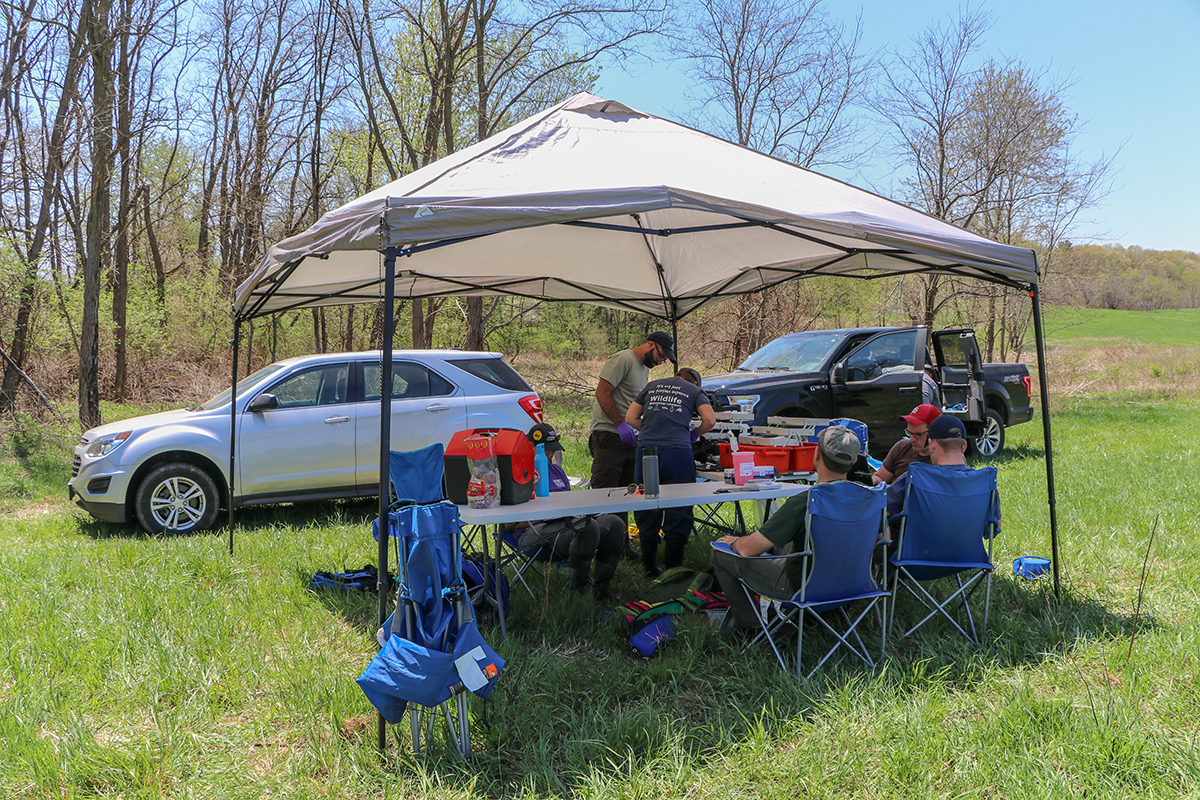
That’s the beauty of my day with the turtle dogs at Nachusa – even as field science becomes more and more high tech with portable DNA sequencers and fetal heart rate monitors with transducers small enough to fit under an ornate box turtle’s shell, there’s still nothing like muddy boots canine-assisted field science to get the job done.
Because, ultimately, it’s not just about the turtles. It’s about what the ornate box turtle populations at Nachusa Grasslands signal about the health of the preserve overall.
“We need to understand the turtles,” Kleiman explains, “because they are such a signature prairie species. If we have healthy population numbers, with many different ages of individual turtles, then we know that our prairie – our remnants and restored prairies – are functioning the way they’re supposed to. The turtles help us know if we’re succeeding or failing.”
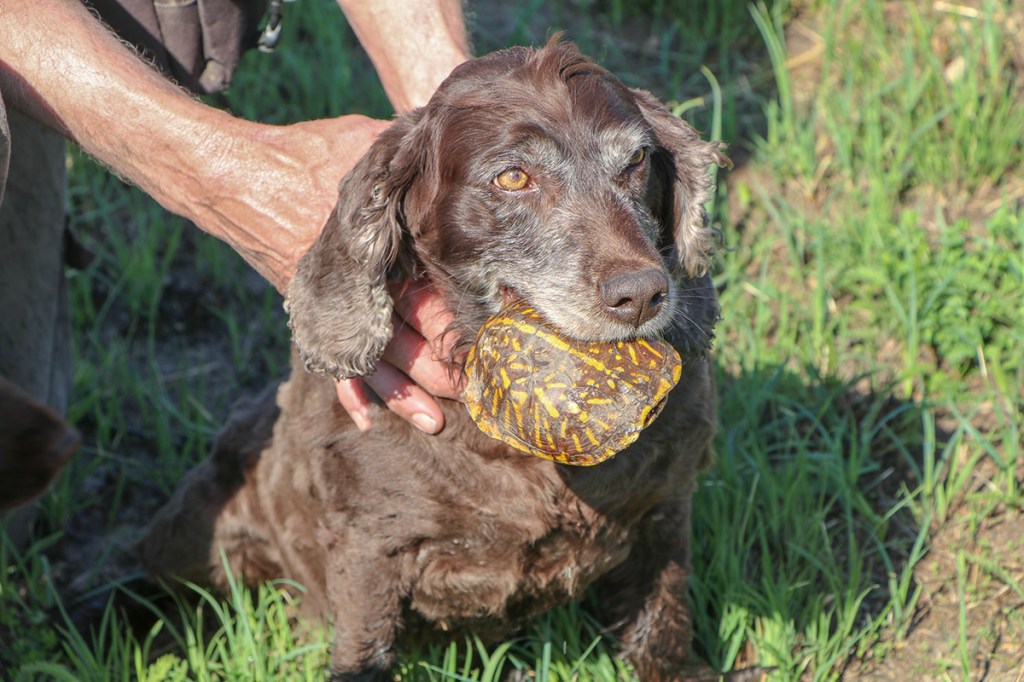



I assume the dogs are used, as is done elsewhere, to retrieve (and protect) turtles in advance of controlled burns, upon which the grassland ecosystem itself can not survive?
Hi Bill — at Nachusa, they burn in March when the turtles are still underground hibernating. In this part of the state, turtles tend to emerge around the third week of April.
I enjoyed the article very much. Thank you and I look forward to more articles.
So cool!! I wonder if anyone is doing something similar with Bog Turtles in eastern Pennsylvania ?
My husband and I live in northern Arkansas on 72 acres. We have a dog that is half Jack Russell and half Fox terrier.
We call him The Turtle Taxi. He carries turtles from one side of our field to another side. He then gently lays them down on the ground beneath a tree. He digs a shallow hole and covers the turtle up. I have checked to make sure the turtle is alive and well. My husband counts the turtles that he actually sees our dog carry. One summer it was in the 30s or 40s. Box turtles. We enjoyed this article.
I’m so excited that turtles are being helped by Boykins! We had a Boykin for 16 years — the best dog ever. Great article.
Thanks!
Looks like a lot of fun. The turtles definitely need our help. Thanks for sharing.
So how do they train the dogs to retrieve turtles? And if the dogs just do this naturally/instinctively, why?
What a wonderful article! I am a turtle-lover and this made my day! I want to share with my Facebook friends!
I do have Boykin Spaniels. Mine are rescues! They are wonderful dogs! Very smart & fun dogs. They LOVE to please their humans.
After I rescued my first Boykin Spaniel from the shelter, without knowing which breed she was, I felt in love with the breed and my neighbor from SC was the one who told me which breed she was.
Super cool article and how to involve working dogs to keep them busy, happy and make human’s jobs easier!
Awesome!
leave it to TNC to “think outside the box”, by using the spaniels to retrieve Ornate Box Turtles!
What good and interesting work happening here. Thanks for sharing!
My name is John Nichols, I have a degree in wildlife biology from the University of Montana.
I own quite a bit of land near Brasstown Bald in north GA.
I grew up there, and after a long haitus, I returned. I am considering giving my land to the Nature Conservancy.
I have records of eastern box turtles dating back to the 70’s. They have always had a soft spot in my heart.
I would love to be a part of any study.
Terrapin Ornata’s have been living and breeding in my organic back yard for 10 years. I rescued my first turtle from a busy street on a hot 110 degree August day. I took him to a reptile vet to treat his lung infection. It was a lengthy process. I learned that they required at least a 85 degree temp to heal their lungs and a diet high in veggies and fruit. They especially like sweet potatoes and strawberries but will eat tomatoes and bell peppers. Over the years I found a female Ornata that I rehabbed. I now have nine turtles, some brought to me by others, with injured shells. My male Gibbs and female Ziva have bred and I have two turtle babies indoors. They are very slow growers. They do become acclimated to one who cares for them. For the most part I let them live an undisturbed life in my backyard. They enter hibernation around October and come out usually in late March or early April. I keep all chemicals off my yard. In the summer I can find my turtles in the early morning eating from my organic garden. I am stressed by the breeding industry that sells and exploits these beautiful creatures. Two of my turtles will come to my back patio door and scratch the glass to gain my attention. The Native Americans celebrate the turtle as a symbol of the circle of life. Our life is only as healthy as our animals, our nature, our soil, air and water.
This was a very interesting article. It is amazing that the dogs do not crunch down on the shells. The research the students are doing is astounding. That the prairies are coming back is remarkable.